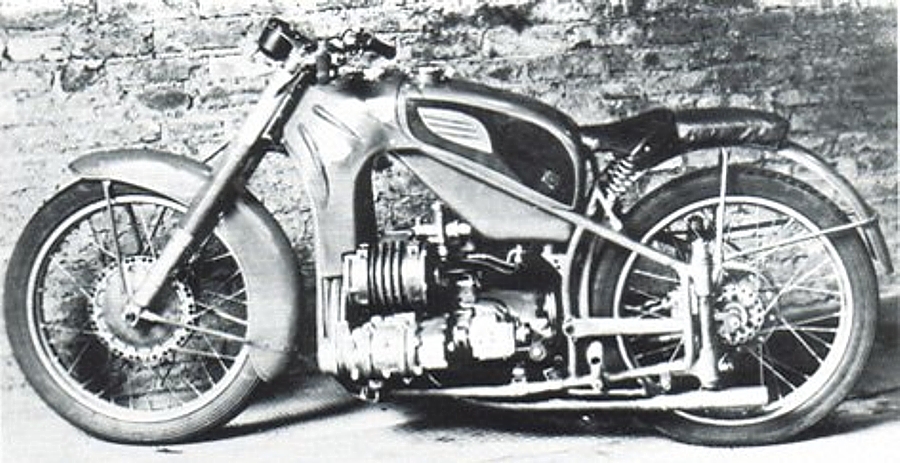In my own quest for more information on the DKW racers and their connection with the Soviets, I found a book in German “DER LETZTE KOMPRESSOR ZWEITAKTER MIT DKW-GENEN” (translates to “THE LAST KOMPRESSOR TWO-STROKE WITH DKW GENES” by Frieder Bach and Heiner Jakob.
Starting in 1945, August Prüßing developed a two-stroke opposed-piston engine with two cylinders and a Centrix compressor in Chemnitz on behalf of the Soviet Military Administration in Germany (SMAD). The basic construction was designed for displacements of 250, 350 and 500 ccm. This engine was the last new construction of a turbocharged two-stroke engine and thus the end of a glorious era in which DKW had played a prominent role in international motorcycle racing since the 1920s and 1930s. The entire wealth of experience from almost two decades of DKW racing development found its expression in an extraordinary design that determined racing events in the USSR well into the 1950s. The design was briefly revived in a modified form in a self-made car by Brunswick privateer Kurt Kuhnke, only to lose its raison d’être with the FIM’s international ban on compressors in 1950. This documentary aims to keep alive the memory of a milestone in motorcycle racing about which little has been known so far.
There is much conjecture about what actually happened with pre-war DKW race department and later events in the Soviet Union. and since. This vacuum was quickly filled with myth, legends and lies.
What did they sound like? These machines were give the nickname “Der Trommelfellbohrer” – “The eardrum drill” as can be seen in footage of crowds running for their lives with their hands over their ears!

